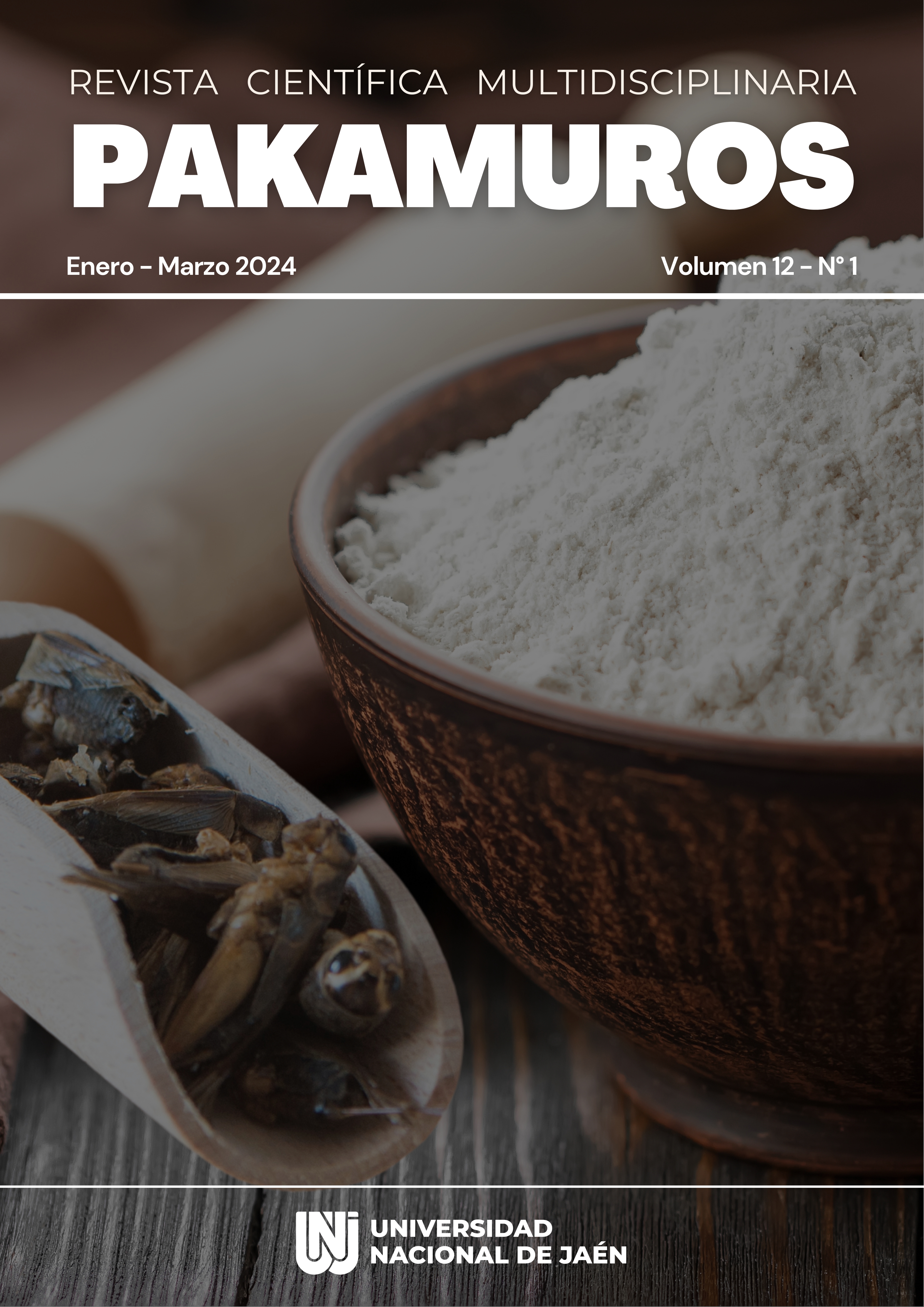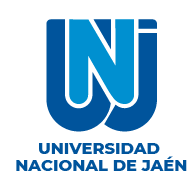Estabilización microbiológica de leche fresca de vaca (Bos taurus) por pre tratamiento ultrasónico y tratamiento térmico de baja temperatura
DOI:
https://doi.org/10.37787/6x1h5q49Palabras clave:
Leche, ultrasonidos, pasterización, Bigelow, inativación microbianaResumen
La presente investigación experimental aplicada tuvo por objetivo evaluar la estabilización microbiana de leche fresca pre sonicada por tratamiento térmicos de baja temperatura (≤60 °C), para reducir su perecibilidad. La leche fresca fue sonicada con una densidad energética de 0.5 kJ/mL antes de ser tratada térmicamente a baja temperatura (40 a 60 °C) por diferentes tiempos; la leche pre sonicada y tratada térmicamente fue evaluada en su contenido de Aerobios Mesófilos Totales (AMV) y Coliformes Totales (CT), y el efecto del tratamiento sobre las poblaciones microbianas fue modelado usando el Modelo de Bigelow. Se determinó que los tratamientos entre 40 y 45 °C generaron incrementos poblacionales; pero que tratamientos encima de los 55.04 °C para AMV y de 49.28 °C para CT iniciaron procesos de inactivación microbiana, siendo ambas temperaturas las más bajas temperaturas de inactivación reportadas hasta el momento para leche fresca. El aumento de la sensibilidad térmica estaría ligada a la producción de daño sub letal a las células de AMV y CT, lo que permitiría estabilizar microbiológicamente leche fresca a más bajas temperaturas reduciendo los efectos deletéreos de los tratamientos térmicos.
Referencias
Abdullah, S. N., You, K. Y., Khamis, N. H., & Cheong Y, C. (2019). Modelling the Dielectric Properties of Cow’s Raw Milk under Vat Pasteurization. Progress In Electromagnetics Research Materials, 84, 157–166.
Chen, F., Zhang, M., & Yang, C. hui. (2020). Application of ultrasound technology in processing of ready-to-eat fresh food: A review. In Ultrasonics Sonochemistry (Vol. 63). https://doi.org/10.1016/j.ultsonch.2019.104953
D’Incecco, P., Limbo, S., Hogenboom, J. A., & Pellegrino, L. (2021). Novel technologies for extending the shelf life of drinking milk: Concepts, research trends and current applications. Lwt, 148(May), 111746. https://doi.org/10.1016/j.lwt.2021.111746
Dash, K. K., Fayaz, U., Dar, A. H., Shams, R., Manzoor, S., Sundarsingh, A., Deka, P., & Khan, S. A. (2022). A comprehensive review on heat treatments and related impact on the quality and microbial safety of milk and milk-based products. Food Chemistry Advances, 1(May), 100041. https://doi.org/10.1016/j.focha.2022.100041
de Oliveira, G. B., Favarin, L., Luchese, R. H., & McIntosh, D. (2015). Psychrotrophic bacteria in milk: How much do we really know? Brazilian Journal of Microbiology, 46(2), 313–321. https://doi.org/10.1590/S1517-838246220130963
Feng, P., Weagant, S. D., & Grant, M. A. (2021). BAM Chapter 4: Enumeration of Escherichia coli and the Coliform Bacteria. Bacteriological Analytical Manual (BAM). https://www.fda.gov/food/laboratory-methods-food/bam-chapter-4-enumeration-escherichia-coli-and-coliform-bacteria
Jiménez-Sánchez, C., Lozano-Sánchez, J., Segura-Carretero, A., & Fernández-Gutiérrez, A. (2017). Alternatives to conventional thermal treatments in fruit-juice processing. Part 1: Techniques and applications. Critical Reviews in Food Science and Nutrition, 57(3), 501–523. https://doi.org/10.1080/10408398.2013.867828
Juraga, E., Vukušić Pavičić, T., Gajdoš Kljusurić, J., Brnčić, M., Juraga, T., & Herceg, Z. (2021). Properties of milk treated with high-power ultrasound and bactofugation. Food Technology and Biotechnology, 59(1), 92–102. https://doi.org/10.17113/ftb.59.01.21.6721
Ksontini, H., Kachouri, F., & Hamdi, M. (2011). Microflora distribution and assessment of microbiological quality milk from Tunisian collection centres. African Journal of Microbiology Research, 5(12), 1484–1491.
Lemma, F., Alemayehu, H., Stringer, A., & Eguale, T. (2021). Prevalence and Antimicrobial Susceptibility Profile of Staphylococcus aureus in Milk and Traditionally Processed Dairy Products in Addis Ababa, Ethiopia. BioMed Research International, 2021. https://doi.org/10.1155/2021/5576873
Liao, X., Li, J., Suo, Y., Chen, S., Ye, X., Liu, D., & Ding, T. (2018). Multiple action sites of ultrasound on Escherichia coli and Staphylococcus aureus. Food Science and Human Wellness, 7(1), 102–109. https://doi.org/10.1016/j.fshw.2018.01.002
Lim, S. Y., Benner, L. C., & Clark, S. (2019). Neither thermosonication nor cold sonication is better than pasteurization for milk shelf life. Journal of Dairy Science, 102(5), 3965–3977. https://doi.org/10.3168/jds.2018-15347
Marchesini, G., Fasolato, L., Novelli, E., Balzan, S., Contiero, B., Montemurro, F., Andrighetto, I., & Segato, S. (2015). Ultrasonic inactivation of microorganisms: A compromise between lethal capacity and sensory quality of milk. Innovative Food Science and Emerging Technologies, 29, 215–221. https://doi.org/10.1016/j.ifset.2015.03.015
Maturin, L., & Peeler, J. T. (2021). BAM Chapter 3: Aerobic Plate Count. Bacteriological Analytical Manual (BAM). https://www.fda.gov/food/laboratory-methods-food/bam-chapter-3-aerobic-plate-count
Myer, P. R., Parker, K. R., Kanach, A. T., Zhu, T., Morgan, M. T., & Applegate, B. M. (2016). The effect of a novel low temperature-short time (LTST) process to extend the shelf-life of fluid milk. SpringerPlus, 5(1), 1–12. https://doi.org/10.1186/s40064-016-2250-1
Peng, S., Hummerjohann, J., Stephan, R., & Hammer, P. (2013). Short communication: Heat resistance of Escherichia coli strains in raw milk at different subpasteurization conditions. Journal of Dairy Science, 96(6), 3543–3546. https://doi.org/10.3168/jds.2012-6174
Ribeiro-Júnior, J. C., Tamanini, R., Alfieri, A. A., & Beloti, V. (2020). Effect of milk bactofugation on the counts and diversity of thermoduric bacteria. Journal of Dairy Science, 103(10), 8782–8790. https://doi.org/10.3168/jds.2020-18591
Sarkar, S. (2015). Microbiological considerations: Pasteurized milk. International Journal of Dairy Science, 10(5), 206–218. https://doi.org/10.3923/ijds.2015.206.218
Solano-Cornejo, M. A. (2013). Modelamiento de la cinética de desinfección superficial de tomates (Lycopersicum esculentum) frescos usando soluciones de cloro Modeling surface disinfection kinetics of fresh tomato (Lycopersicum esculentum) using chlorine solutions Scientia Agropecuaria. Scienta Agropecuaria, 4, 27–35.
Soltani, M., Sardari, H., Soofiabadi, M., & Hosseinpour, S. (2022). Ultrasound assisted processing of milk: Advances and challenges. Journal of Food Process Engineering, July, 1–20. https://doi.org/10.1111/jfpe.14173
Wang, Y., Han, X., Chen, X., & Deng, Y. (2021). Potential harmful of extracellular proteases secreted by Pseudomonas fluorescens W3 on milk quality. Journal of Food Processing and Preservation, 45(3), 1–8. https://doi.org/10.1111/jfpp.15192
Wei, X., Lau, S. K., Chaves, B. D., Danao, M. G. C., Agarwal, S., & Subbiah, J. (2020). Effect of water activity on the thermal inactivation kinetics of Salmonella in milk powders. Journal of Dairy Science, 103(8), 6904–6917. https://doi.org/10.3168/jds.2020-18298
Yu, T., Zhang, X., Feng, R., Wang, C., Wang, X., & Wang, Y. (2022). Comparison of the Effects of High Hydrostatic Pressure and Pasteurization on Quality of Milk during Storage. Foods, 11(18), 1–19. https://doi.org/10.3390/foods11182837
Publicado
Declaración de disponibilidad de datos
Declaramos bajo juramento que ponemos a disposición del público los datos de la investigación para que puedan ser accedidos por los lectores/as.
Número
Sección
Licencia
Derechos de autor 2024 Revista Científica Pakamuros

Esta obra está bajo una licencia internacional Creative Commons Atribución-NoComercial 4.0.












